The previously disclosed Ticketmaster attack was not a one-off event, but instead part of the largest payment card theft in history impacting over 800 ecommerce sites around the world. If we consider the true impact of this event it is absolutely astonishing. The Target supply-chain-enabled attack from a few years ago was frightening, and that was only one merchant under attack, on in-store point-of-sale systems, for a mere 9 days. The Magecart website supply chain attack leveraged digital website payment card skimming that victimized over 800 global merchants for over 3 years – multiple orders of magnitude larger and significantly more chilling in scope.
The Magecart hacker group successfully attacked some of the most sophisticated ecommerce players and operated largely undetected since 2015 by taking advantage of a client-side vulnerability that exists in every commercial website today. In the case of Ticketmaster, Magecart actors were able to compromise a 3rd party chatbot service called Inbenta that had been embedded on the Ticketmaster site. By manipulating the Inbenta JavaScript code on Ticketmaster’s webpages, Magecart could exfiltrate payment information from every single Ticketmaster customer who was served the Inbenta code.

The client-side browser is the primary environment wherein websites display and capture critical customer and payment data. It is the front door for interaction with customers and their data. 3rd party JavaScript executes on the client-side browser and is granted unmanaged and unlimited access to the entire webpage including the ability to exfiltrate data (keylogging, web injection, form field manipulation, phishing, etc.) and deface/alter webpage content. Simply put, by integrating 3rd party JavaScript, website owners are handing out skeleton keys to the front door while they focus extensively on securing the server-side back door. Security pros must think twice about being so cavalier with the skeleton keys to their front door and diligently secure both the server side and the client side of web sessions.
Given that many 3rd party vendors have comparatively weaker security protocols than the corporate websites that run them, it makes them attractive and susceptible attack targets. 3rd party JavaScript has unlimited access to the webpage DOM. This means that every 3rd party JavaScript vendor, and the hackers that seek to exploit them, have the same level of access to all webpage elements as the website owner’s development team.

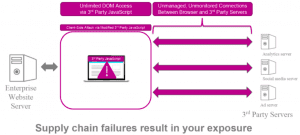
Once that vendor is compromised, their code can be modified or replaced representing a major vulnerability for website owners. Magnifying the potential damage, once a hacker compromises a single 3rd party vendor, they have access to every single website that runs the tool.
3rd party JavaScript is served from external remote servers and executes on the client. This makes current security approaches such as pentesting, periodic code review, and dynamic application security testing entirely incapable of preventing these attacks. Since client-side connections with external servers are completely unmanaged and largely unmonitored, the company has no visibility into what these 3rd parties are doing and no way to prevent hackers from maliciously exploiting this access. Nearly every corporate website is currently unavoidably vulnerable to this attack vector.
Request an Expert Walk-Through of Data Exfiltration from Your Site
Here’s what you can do …
Luckily, there are steps that security teams can take to mitigate or even eliminate the risks of 3rd party vendors. From stringent prevention-level controls that still enable the beneficial usage of 3rd parties all the way to usage limitations that are restrictive and counterproductive, there are practical things that security pros can implement today to protect their companies from the next website supply chain attack.
Prevention is the best option
The best thing security pros can do to prevent an attack like Magecart is to implement technology that controls the access and permissions of every 3rd party running on the page. This insulates websites, their corporate owners, their visitors and private customer data from the inappropriate behaviors of overzealous 3rd parties and the more malicious activities of hackers that seek to exploit them.
Prevention-level approaches for addressing client-side connections not only secure the organization but are required for adequate data control defined by regulatory compliance (e.g. GDPR and California’s newly passed Digital Privacy Law). Without the ability to control private customer data and prevent unauthorized access by 3rd party website vendors or hackers, an organization is in a state of non-compliance.
Additionally, a major benefit of prevention is that with security and privacy concerns satisfied, the business is free to deploy beneficial 3rd party website tools to achieve the shared goal of the business – revenue generation. By using 3rd parties on otherwise sensitive pages (e.g. payment, registration, login) the business is able to optimize their conversion rates at critical junctions of the customer journey. By using new and innovative tools, the business can be dynamic and differentiate from their peers who are forced to move slower and in a more restricted fashion. The end result is a secure and compliant site that delivers a superior customer experience and produces better analytics.
Monitoring and detection
While prevention is obviously the best method, monitoring provides a less secure and reactive option. Magecart’s multi-year activities are evidence that detection, although helpful, is woefully inadequate. The major inadequacy of detection approaches is that they are incapable of detecting these attacks in real-time. Even with a multitude of global sensors detection schemes may miss highly targeted and hyper-segmented attacks altogether.
Although they may detect an attack, they assuredly will never detect the attack in time for the website owner to avoid some damage. After all, even if the majority of the damage is avoided after detection, any leakage of customer data constitutes a compliance violation that will require full public disclosure. The resulting fines, PR crises and operational fire drills are typically crippling. We have not even begun to discuss that detection approaches have no remediation capability, so the only response is to completely remove the tool and suffer the operational and capital costs associated with losing and/or replacing its functionality. Ultimately, even this removal does not address the root cause leaving the site entirely and continuously exposed to future attacks via another compromised 3rd party tool operating on the site.
Fundamentally, these approaches are not scalable. 3rd party JavaScript changes routinely and sites are frequently changing and rotating the vendors they use. The alert fatigue coupled with the reactive nature of detection and the persistence of the underlying vulnerability renders these approaches severely limited.
Vendor due diligence assessments
Many organizations, and especially those under strict compliance mandates, perform routine, comprehensive vendor security assessments. Although, well intended and highly recommended, such exercises only provide a point-in-time assessment – and even then, only produce a comfortability level rating of a vendor’s security program. Any vendor can be breached at any time. In practice we see some of the most seemingly mature and trusted 3rd party website tools be breached and exploited to victimize hundreds of websites. Although these assessments provide a semblance of comfortability and satisfy some compliance requirements, they do not provide prevention or even continuous detection. These assessments should be part of a comprehensive security program but are in no way adequate as a stand-alone approach to mitigating or preventing 3rd party risk.
Restricting the usage of 3rd party tools
The last resort would be to exercise a debilitating level of caution. The result is limiting the usage of beneficial 3rd party tools and is entirely counterproductive to the overall goals of the business. Limiting the number of tools used limits the organization’s ability to provide an engaging user experience and extract meaningful analytics. Relying only on “mature” or “trusted” 3rd party vendors and missing out on new and innovative tools makes delivering a compelling, differentiated, and dynamic web presence difficult. Restricting 3rd party tool usage in on sensitive areas of the website cripples conversion rates if customer experience and analytics are not optimized at critical points in the customer journey – like account registration, transactions, and check out.

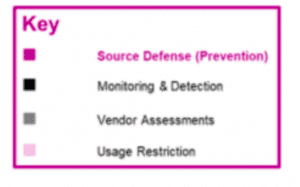
The Time to Act is Now
It’s likely that the more than 800 compromised sites in this attack are just the tip of the iceberg given the amount of time that this attack was running undetected. Similar attacks on major global airlines, online electronics merchants, online mass merchants and credit rating agencies have recently been reported as exploited by this same attack vector. 3rd party vendors have shifted blame to site owners to incorporate the necessary security measures themselves. It is therefore critical that site owners proactively employ preventative technology to prevent website supply chain attacks and continue to benefit from the differentiating utility they provide.
Next Steps
Quickly access an assessment of your current risk level.
If the industry wide susceptibility to this attack vector does not have you concerned about your own current vulnerability:
Request a customized expert walk-through of data exfiltration on your site @
www.sourcedefense.com



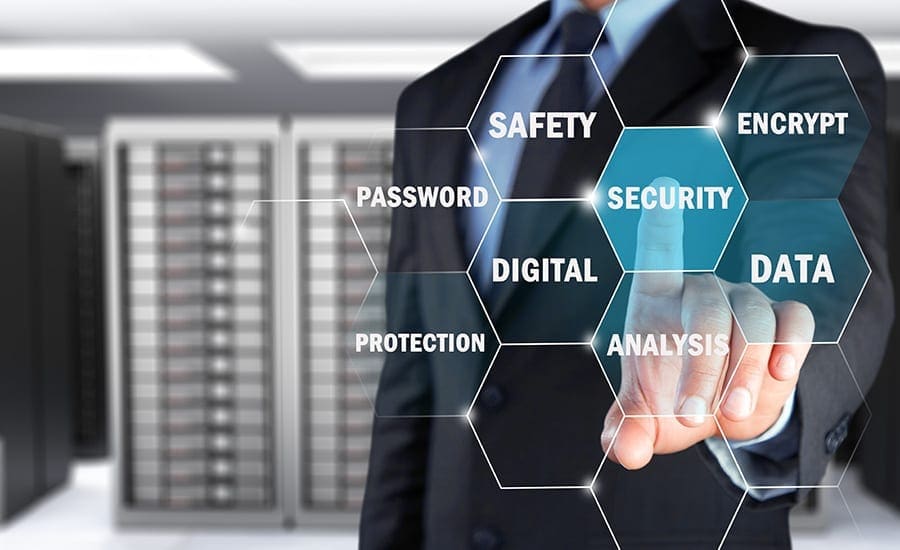

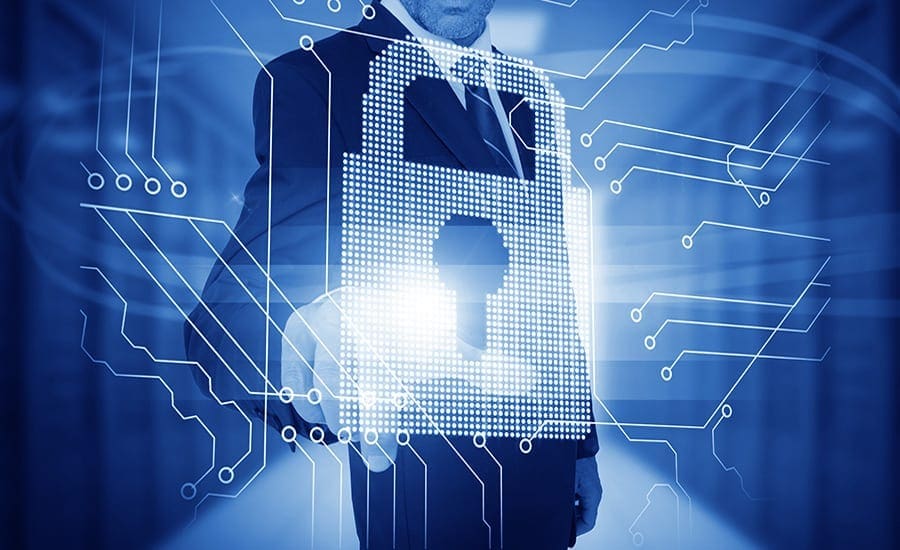

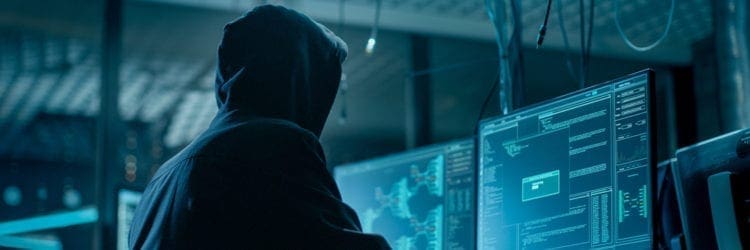












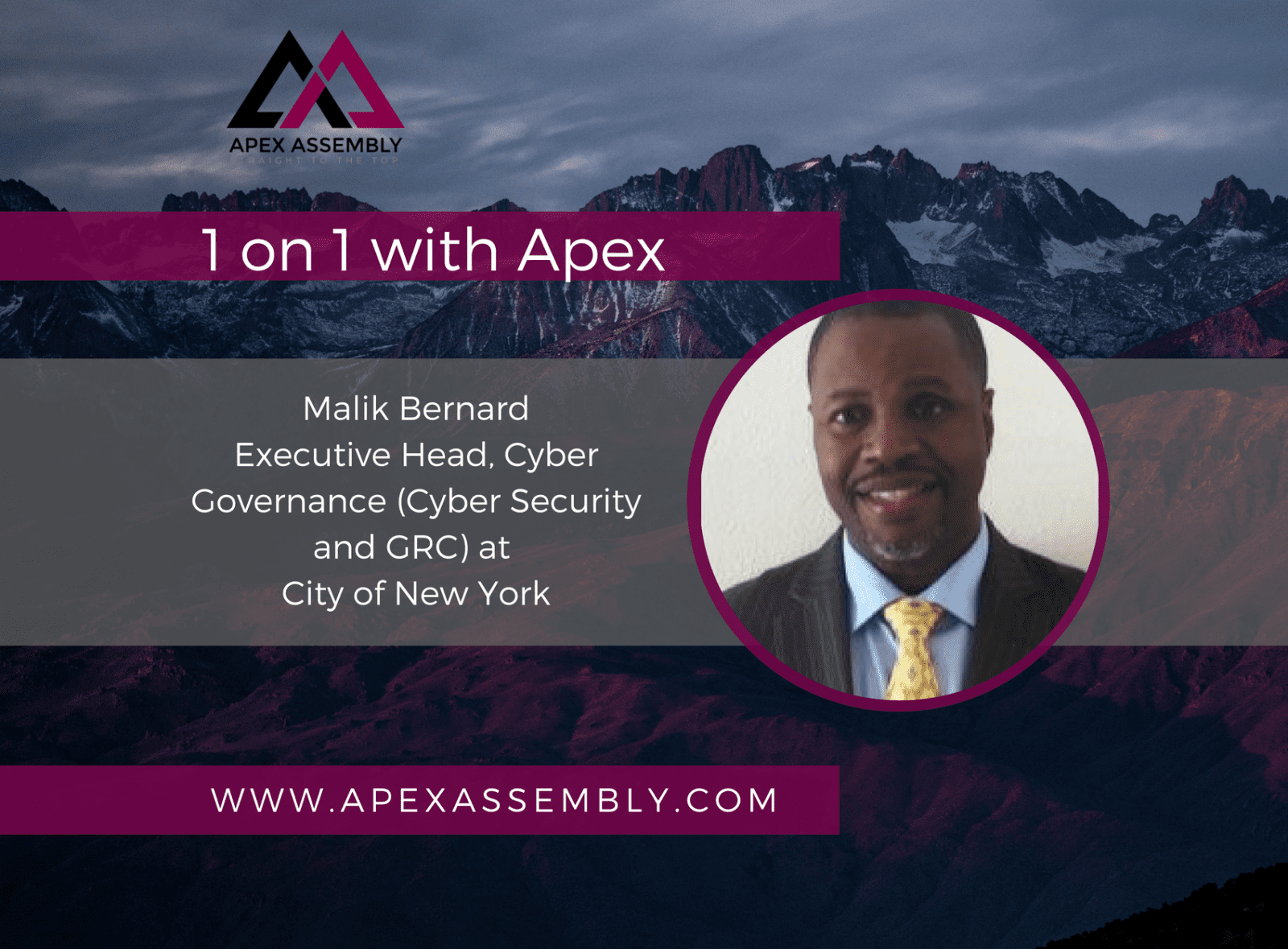

ROLE DESCRIPTION
We are looking for a Membership Manager to join the company and take on one of the most opportunistic roles the industry has to offer. This is a role that allows for you to create and develop relationships with leading solution providers in the enterprise technology space. Through extensive research and conversation you will learn the goals and priorities of IT & IT Security Executives and collaborate with companies that have the solutions they are looking for. This role requires professionalism, drive, desire to learn, enthusiasm, energy and positivity.
Role Requirements:
Role Responsibilities:
Apex offers our team:
Entry level salary with competitive Commission & Bonus opportunities
Apex offers the ability to make a strong impact on our products and growing portfolio.
Three months of hands on training and commitment to teach you the industry and develop invaluable sales and relationship skills.
Opportunity to grow into leadership role and build a team
Extra vacation day for your birthday when it falls on a weekday
All major American holidays off
10 paid vacation days after training period
5 paid sick days
Apply Now >>